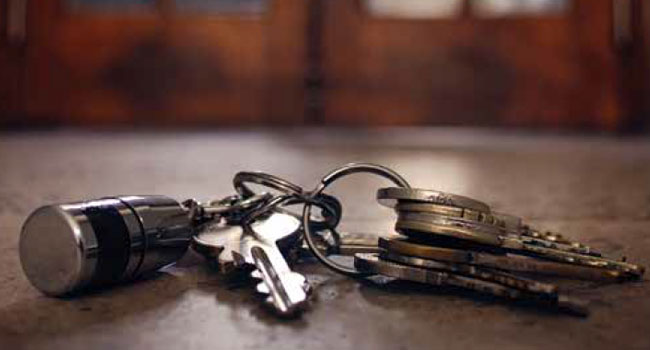
Industry Professional
Controlling The Keys
School district deploys access control system
- By Jennifer Robinson
- Feb 01, 2017
In 2004, Brian Gruchow, director of
Maintenance, Operations and Transportation
needed a solution for a district-
wide key control problem. The
Roseville, Calif., Joint Unified School
District consisted of four high schools,
one independent school, one continuation
school and a transportation department,
with plans for a fifth high school, which has
since opened. At the time, it was estimated
that each school lost 20 keys per year. It was
financially prohibitive to rekey the entire
school at each occurrence; in fact, a complete
rekey had not occurred in 30 years.
After a year of in–depth research and
testing of many systems, the RJUSD
found CyberLock’s access control system
to be the solution that best fit the
district’s needs, including installation
and maintenance. The cost savings in
converting to CyberLock were immediately
recognized when they realized
there was no requirement for hardwiring;
they could use their existing Schlage and
Corbin-Russwin hardware; and there
was no need to provide and change out
batteries in the locks.
The district started the conversion in
2005 by doing the exterior doors first,
thanks to a C.O.P.S. grant from local law
enforcement. When the new Antelope
High School was built, it used Cyber-
Lock throughout. Currently, RJUSD has
more than 80 percent of the similar locks
installed. Gruchow’s goal is to have the
school district at 100 percent as budgets
allow. This includes the 103-year–old Roseville
High School building, with plans of
a new high school being drawn up.
RJUSD currently has 1,480 locks and
1,008 keys in use. Since implementing the
access control system, lock vandalism has
decreased by 90 percent, and approximately
70 percent of the locks are still the
original locks that were installed. About
half of the keys have been replaced with
rechargeable keys to “get out of the battery
business.” The rechargeable keys are
also an environmentally more green option
that reduces waste and cost.
The four main benefits RJUSD has
enjoyed in the last decade of using Cyber-
Lock are: the reduced number of keys, never
having to rekey, the simplicity of use and
the audit trail records via the software. The
individual school sites saw such a benefit
that they started using their own budget to
implement more locks. They are now adding
more padlocks and switch locks to allow
for audit trails on alarm keypads and
HVAC override switches, which will help
with accountability of energy usage. An
additional benefit was the ability to use the
audit trail for time and attendance.
With a student population of more
than 10,000 across numerous campuses,
providing security has now been made
easier with the CyberLock conversion.
This article originally appeared in the February 2017 issue of Security Today.
About the Author
Jennifer Robinson is a sales executive with Cyber Security Source, a division of Tustin Lock & Key.